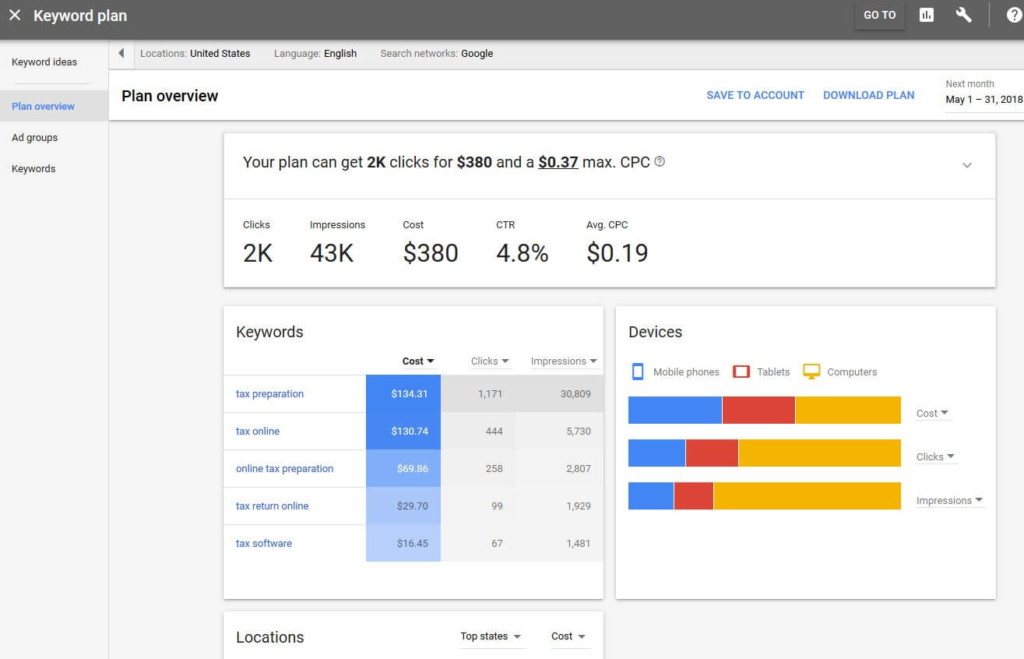As the fashion industry increasingly shifts online, digital marketing becomes the runway for success. In this journey, Google Ads emerges as the couture of advertising, offering a powerful toolset to elevate your fashion brand.
The Fashion Digital Evolution:
Gone are the days of relying solely on brick-and-mortar stores. Today, the fashion industry thrives in the digital landscape. With consumers scrolling through styles on smartphones and making purchases with a click, digital marketing is not just an option – it’s a necessity.
Enter Google Ads: Your Fashionable Ally
In the realm of online advertising, Google Ads stands as a beacon for fashion brands. This advertising platform allows you to showcase your products to a vast audience precisely when they are searching for them. It’s the equivalent of having a front-row seat at a fashion show but for your brand.
1. Why Google Ads for Fashion?
- Targeted Reach: Google Ads lets you define your audience based on their interests, demographics, and online behavior. No more fashion faux pas – your ads reach those genuinely interested in your style.
- Cost-Effective: In the world of advertising, budget matters. Google Ads lets you set your budget, ensuring you get the best bang for your buck. No extravagant spending, just efficient exposure.
- Visual Appeal: Fashion is visual, and Google Ads understands that. Engaging ad formats and eye-catching visuals ensure your brand stands out in the crowded digital fashion space.
2. Keyword Research :

Choosing the right keywords is akin to selecting the perfect fabric for a designer garment. It’s the foundation upon which your entire campaign rests. Relevant keywords ensure that your ads reach the audience genuinely interested in your fashion offerings, increasing the likelihood of conversion.
Why It Matters:
- Precision Targeting: Reach users actively searching for products in your niche.
- Cost Efficiency: Avoid wasted ad spend on irrelevant clicks.
- Enhanced Quality Score: Improve your ad’s relevance, leading to better ad placement and lower costs.
Tools and Techniques for Effective Keyword Research
Now that we understand the significance, let’s explore practical tools and techniques to unearth the right keywords for your fashion brand.
Tools:
- Google Keyword Planner: Leverage Google’s own tool for insights into search volumes and competition.
- Ubersuggest: Discover related keywords and get an overview of the competitive landscape.
- Semrush: Analyze your competitors’ keywords and identify gaps in your strategy.
Techniques:
- Seed Keywords: Start with a broad term related to your products and expand from there.
- Long-Tail Keywords: Uncover specific, niche phrases that align with your offerings.
- Competitor Analysis: Learn from your competitors and identify keywords driving their success.
Examples of Fashion-Related Keywords and Their Search Volumes :
Let’s put theory into practice with some examples tailored for a hypothetical fashion brand specializing in sustainable clothing.
“Ethical Fashion”
Monthly Searches: 20,000
Competition: Medium
“Organic Cotton Clothing”
Monthly Searches: 10,000
Competition: Low
“Vegan Leather Jackets”
Monthly Searches: 8,000
Competition: High
2.1 Audience Targeting in Detail for Fashion :

Defining Your Target Audience
Before launching your Google Ads campaign, it’s essential to have a crystal-clear understanding of who your audience is. Consider the following:
Demographics:
Define age groups, gender, and location that align with your brand.
Example: If you sell trendy streetwear, your target audience might be urban millennials aged 18-30.
Interests and Hobbies:
Explore the interests and hobbies of your potential customers.
Example: If your fashion line is sustainable, target environmentally-conscious consumers interested in eco-friendly lifestyles.
Online Behavior:
Understand where your audience spends their time online.
Example: If your target customers are active on Instagram, allocate resources to visual-centric ads.
Utilizing Demographic and Interest-Based Targeting :
Demographic Targeting:
Set parameters based on age, gender, and location.
Example: If your data shows that your best customers are females aged 25-34, tailor your ads accordingly.
Interest-Based Targeting:
Explore Google’s vast array of predefined interests.
Example: If your fashion line is focused on fitness apparel, target users interested in fitness and wellness.
Affinity Audiences:
Reach users based on their long-term interests.
Example: If your brand aligns with a particular lifestyle, choose an affinity audience that resonates with your brand ethos.
Case Studies on Successful Audience Targeting in the Fashion Industry
Let’s draw inspiration from real-world examples:
Nike:
Nike targets not just sports enthusiasts but also those interested in a healthy lifestyle. They use demographic targeting to reach different age groups for various product lines.
H&M:
H&M effectively uses interest-based targeting, especially on social issues. By aligning with causes like sustainability, they attract an audience passionate about ethical fashion.
Zara:
Zara focuses on the urban young adult demographic. Their ads often feature trendy, cosmopolitan lifestyles, resonating with the interests of their target audience.
3. Campaign Setup for Fashion Brand

3.1. Campaign Types
When it comes to promoting your fashion apparel through Google Ads, choosing the right campaign type is crucial. Google offers various campaign types, each serving a unique purpose. Let’s break down the key options:
1. Search Campaigns:
Overview: Search campaigns show your ads when people search for terms related to your products.
Why it Works: Ideal for capturing users actively looking for fashion items.
Example: If someone searches “trendy summer dresses,” your ad can appear.
2. Display Campaigns:
Overview: Display campaigns showcase your ads on websites and apps within the Google Display Network.
Why it Works: Great for creating brand awareness through visually appealing banners.
Example: Your fashion ad might pop up on a fashion blog or lifestyle website.
3. Shopping Campaigns:
Overview: Shopping campaigns highlight your products, including images and prices.
Why it Works: Perfect for an e-commerce store, allowing users to see your products directly.
Example: Displaying a carousel of your latest fashion items with images and prices.
4. Video Campaigns:
Overview: Video campaigns promote your fashion brand through video ads on YouTube.
Why it Works: Engages users visually, showcasing your brand story or new collection.
Example: A short video highlighting the style and quality of your clothing line.
Choosing the Right Campaign Type for Fashion Apparel:
Consider Your Goals:
If you’re looking to boost online sales, Shopping campaigns might be your go-to.
For brand visibility and storytelling, Video campaigns can be impactful.
Know Your Audience:
Search campaigns target users actively searching, while Display campaigns cater to a broader audience on various websites.
E-commerce Integration:
If you have an online store, Shopping campaigns seamlessly showcase your products and drive sales.
Visual Appeal:
If your fashion line is highly visual, consider Display and Video campaigns to showcase your products in a visually appealing manner.
Budget Allocation:
Depending on your budget, prioritize campaigns based on your marketing goals. Allocate more budget to campaigns aligning with your primary objectives.
4. Advanced Google Ads Strategies :

4.1. Dynamic Remarketing: Elevating Your Fashion Ads
Dynamic remarketing is a game-changer in the world of Google Ads, especially for the dynamic and visually enticing domain of fashion. In this section, we’ll explore how to implement dynamic remarketing for fashion products, customize ads based on user interactions, and peek into some success stories that showcase its effectiveness.
Implementing Dynamic Remarketing for Fashion Products
Dynamic remarketing takes personalized advertising to the next level. Instead of showing generic ads to all visitors, it tailors the content based on their previous interactions with your website.
For fashion brands, this means showcasing the exact products users viewed, making a return to your site more tempting.
How to Implement:
- Set Up Your Product Feed: Ensure your product feed is comprehensive, including details like product images, prices, and descriptions.
- Create Dynamic Remarketing Campaign: In Google Ads, set up a dynamic remarketing campaign and link it to your product feed.
- Design Engaging Ad Templates: Craft visually appealing ad templates that can dynamically feature different products based on user behavior.
Customizing Ads Based on User Interactions
Tailoring ads based on user interactions is where the magic happens. By understanding how users engage with your site, you can show them ads that align with their preferences. For a fashion brand, this could mean showcasing similar items or suggesting complementary accessories.
Key Customization Strategies:
- Viewed Products: Feature products that users have previously viewed on your site.
- Shopping Cart Abandonment: Remind users of items left in their shopping cart, enticing them to complete the purchase.
- Cross-Selling: Suggest related products based on their browsing history, enhancing the shopping experience.
Shopping Campaign Optimization
These campaigns allow you to showcase your products directly within search results, providing users with a visual preview and essential details before they even click.
Step 1: Create a Merchant Center Account
To kickstart your Google Shopping journey, set up a Merchant Center account. This serves as the hub for your product information.
Step 2: Link Merchant Center to Google Ads
Seamless integration is key. Link your Merchant Center account to your Google Ads account to effortlessly sync product details.
Step 3: Product Feed Mastery
The heartbeat of your Shopping campaign lies in your product feed. Ensure it’s comprehensive, accurate, and up-to-date. Include essential elements like product titles, descriptions, prices, and high-quality images.
Optimization Techniques
1. Leverage Negative Keywords
Prevent your ads from showing up in irrelevant searches by incorporating negative keywords. For a fashion retailer, this could mean excluding terms like “second-hand” or “used.”
2. Refine Product Titles and Descriptions
Craft titles and descriptions that resonate with your audience. Be clear, concise, and highlight unique selling points. For instance, if you sell designer dresses, include the brand, style, and perhaps a distinctive feature.
3. Take Advantage of Custom Labels
Custom labels allow you to tag products based on your specific criteria. This could be seasonality, best-sellers, or clearance items. Use these labels to create more targeted campaigns.
4. Optimize Bids for Product Groups
Not all products are created equal. Adjust your bids based on performance. Increase bids for high-margin items or those with a higher conversion rate. Fine-tune your strategy by regularly reviewing product group performance.
Integration with E-commerce Platforms
Seamless Transactions
Integrating your Google Shopping campaign with your e-commerce platform ensures a smooth customer journey from click to purchase. Ensure that the purchasing process is user-friendly and optimized for both desktop and mobile users.
Dynamic Remarketing
Amp up your Shopping campaign by implementing dynamic remarketing. Remind potential customers of the products they viewed, enticing them to complete their purchase.
5: Adapting to Industry Trends
As a Google Ads expert, adapting your strategies to align with these trends is the key to keeping your campaigns fresh and effective.
Why Stay Updated?
Fashion isn’t static; it’s a dynamic dance of styles, preferences, and influences. Keeping your finger on the pulse of emerging trends in the fashion industry ensures your Google Ads campaigns remain relevant and resonate with your target audience.
- Consumer Behavior Shifts: Fashion choices are often influenced by societal changes. Keeping an eye on shifts in consumer behavior helps you tailor your ad messaging to what’s currently in vogue.
- Seasonal and Cyclical Trends: Fashion is heavily influenced by seasons and recurring cycles. Adapting your strategy to match these trends ensures your ads are timely and relatable.
- Competitive Edge: In a competitive industry, being the first to leverage new trends gives you a competitive edge. Stay ahead, and your brand will be the one customers remember.
Conclusion :
Adapting to industry trends isn’t an option; it’s a strategy for success in the ever-evolving world of fashion. As a Google Ads expert, your ability to stay nimble and align your strategies with what’s hot right now will set your campaigns apart.
FAQs
Yes, adapting to seasonal changes is crucial. Fashion is often influenced by seasons, and aligning your promotions with these changes ensures your ads remain relevant and timely, capturing the attention of your target audience.


